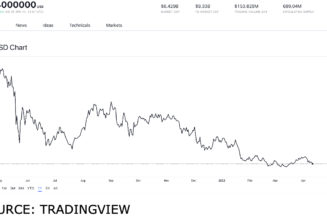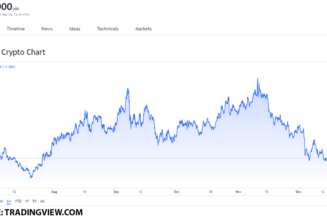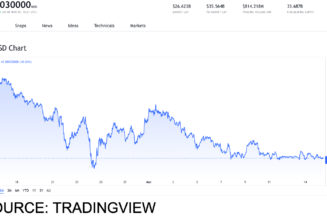
The 16th edition of the European Championships continued to deliver football and entertainment of the highest order as we entered the quarterfinal stage, and the biggest clash of the last-eight featured Belgium and Italy, who squared off in the Allianz Arena in Munich.
Both sides had exited in the quarterfinals in Euro 2016, but one of their fates was set to change here. Belgium had a couple of key players including Eden Hazard out due to injury, while Italy were fit and firing as Roberto Mancini had a winning formula working brilliantly even before the group stage started.
After a hard-fought 90 minutes, Italy emerged 2-1 winners thanks to a couple of very good finishes in the first half. In this analysis, we will take a look at how Roberto Mancini’s side were able to beat the Belgians, and what Roberto Martínez got wrong in his set-up.
Italy’s midfield monopoly
Italy’s possession-play system did not change much from what we have seen throughout the tournament, and it worked absolute wonders for them in this match, partly thanks to a sub-optimal defensive structure on Belgium’s part.
The Red Devils defended in a 5-2-3 wherein Romelu Lukaku and Kevin De Bruyne exchanged positions in the front line (which was somewhere near the halfway line usually) to allow the latter to cover-shadow Jorginho from a central position. The back-five stayed fairly flat, so midfielders Axel Witsel and Youri Tielemans had to concern themselves with Nicolò Barella and Marco Verratti respectively.
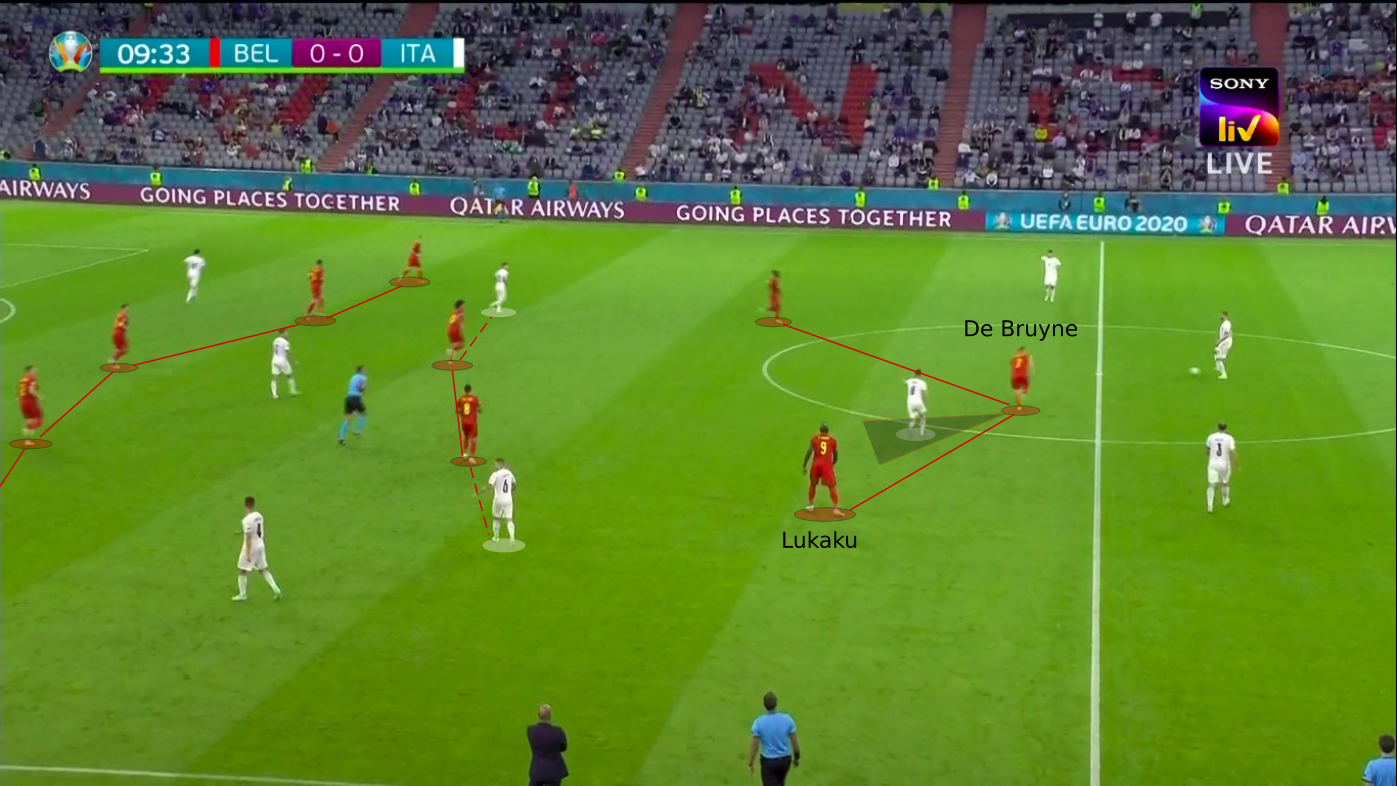
The major issue here, though, was that there was lots of space left between the first two lines. Although Jorginho (the man who almost exclusively occupied that space) was not directly reachable due to De Bruyne’s presence, it was incredibly easy for an Italian defender to fizz a forward pass to one of the other two midfielders, who could then lay it off to Jorginho between the lines.

After that, it was free real estate for Italy, with forward passes available everywhere as two Belgian midfielders stood no chance of stopping a host of runners.

The real agent of chaos, though, was Lorenzo Insigne, who alternated between a wide position on the left (where he overloaded Thomas Meunier along with Leonardo Spinazzola, who could freely come forward as Romelu Lukaku did not track back) and a central position between the opposition defence and midfield.


In other cases, he dropped back to free himself receive the ball on the left while Spinazzola got forward and occupied Meunier.

That was precisely how he started the run which led to his wonder goal in the first half, during which he only had to beat one player one-on-one due to the Belgians’ thin midfield.
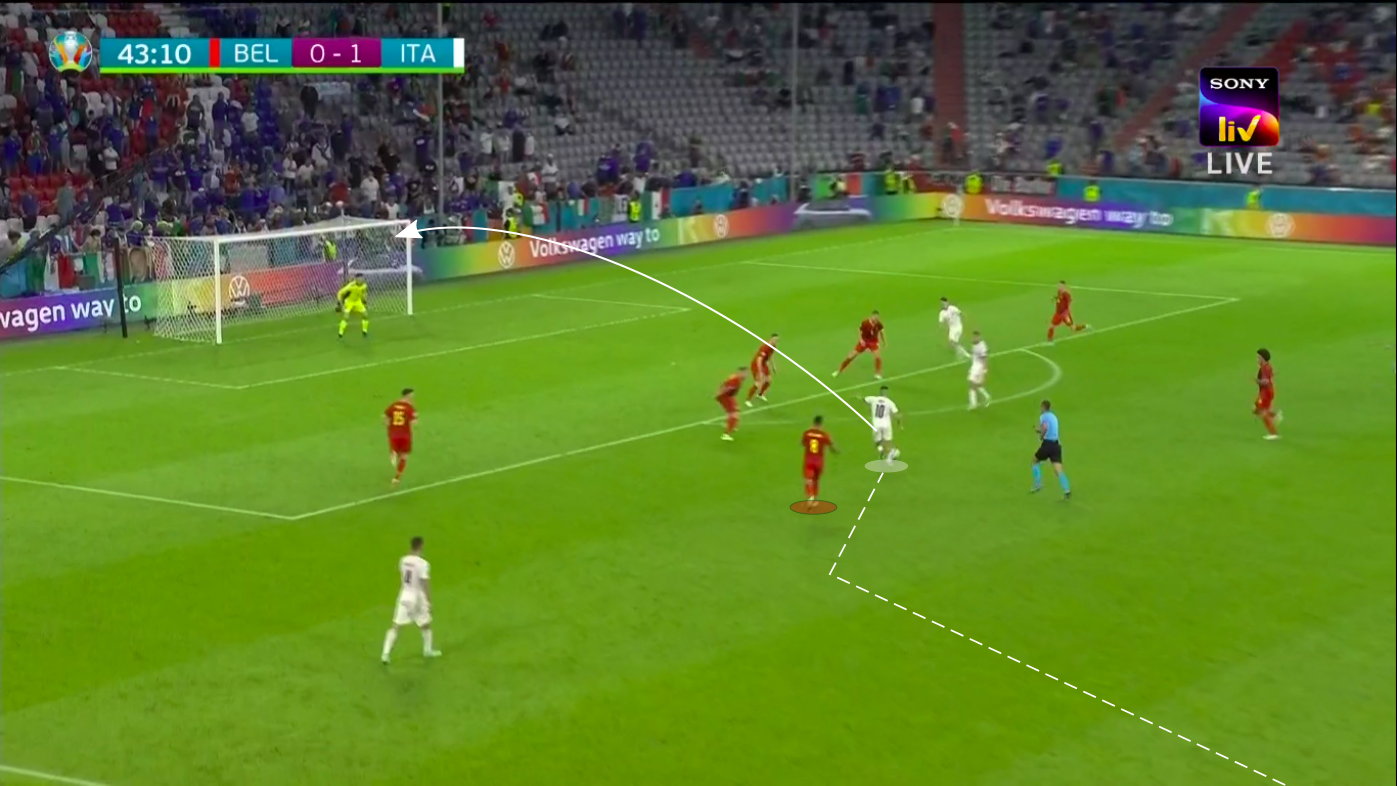
Italy’s well-executed high press
As bad as Belgium’s plan in possession was, credit must also be given to Italy for executing a very successful high press.
Against a back-three, Italy asked their three attackers to worry about one centre-back each. Barella and Verratti man-marked Witsel and Tielemans (directly matching what Belgium did in defence), so the central areas were well-guarded.

Belgium’s defenders were, therefore, forced to go out wide to the wing-backs, but here too they encountered the Italians, who very aggressively pushed their full-backs up.

The stats reflect this too, as most of Italy’s turnovers in the opposing half came in the wide areas.
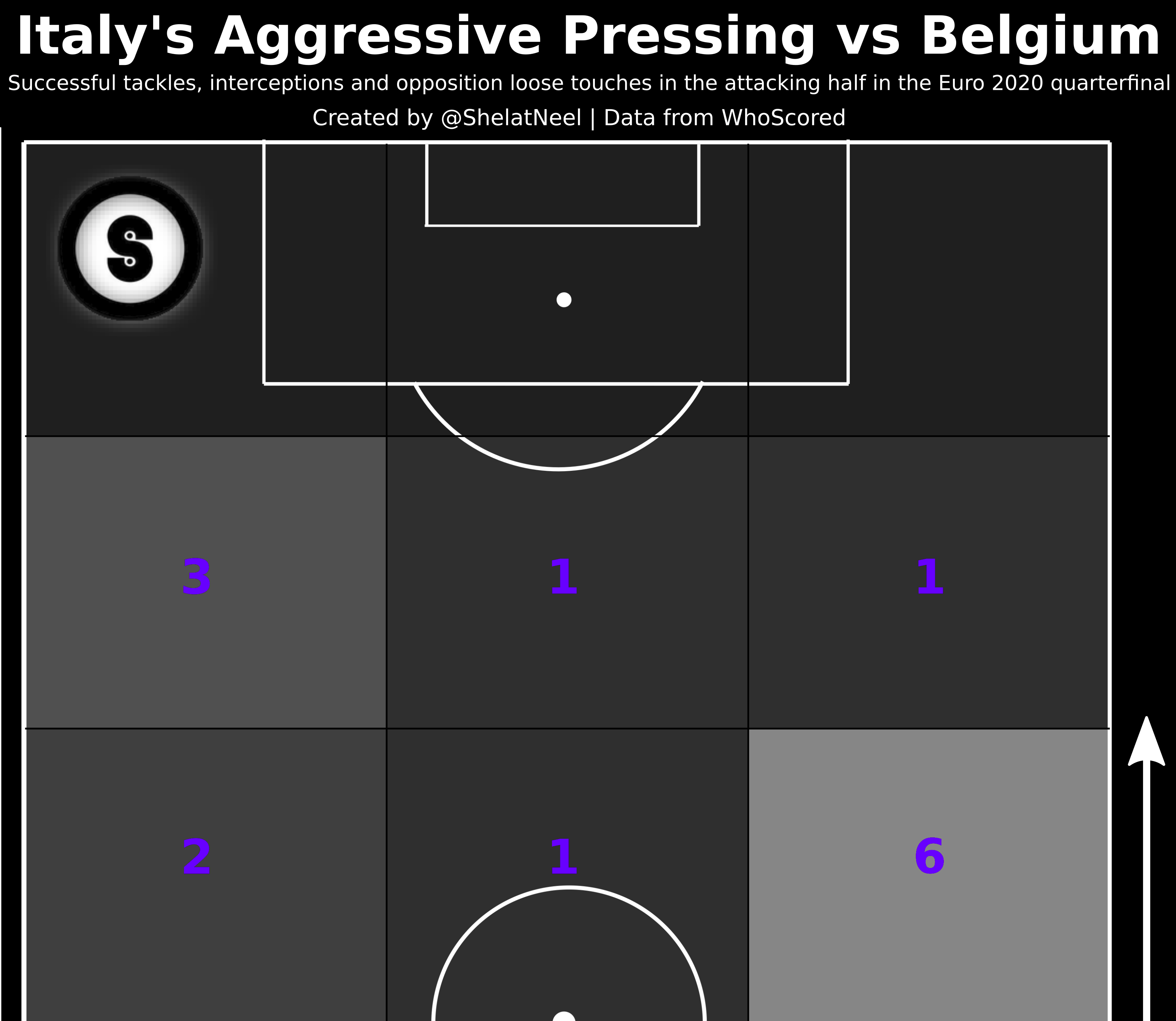
The final alternative for Belgium would be to go long from defence, but they completed only four long passes from their defensive third to the attacking third, as Romelu Lukaku was very well marshalled by the Italian centre-backs, with Giorgio Chiellini looking particularly exceptional.
Conclusion
Once again, Italy put in a tremendously commanding performance against a universally accepted big side – something that they were yet to do in this edition of the Euros, which is why some still doubted their capabilities).
However, it should also be said that Belgium did not play like the best men’s football team in the world (which is how FIFA rank them) – their defensive structure was flawed and, more importantly, their possession-play was almost solely reliant on a star attacker who was carrying an ankle ligament injury while also not fully recovered from a facial injury.
That certainly was not ideal from an opposition perspective, but Roberto Mancini must be credited too for once again showing his tactical brilliance by exploiting the Belgian weaknesses to the fullest, particularly through Insigne’s free role.
Italy will now face Spain in another mouth-watering clash for the semifinal and given the fact that both of those sides have been amazing at controlling possession and high pressing, that will surely be a footballing feast.
Stats courtesy WhoScored.








